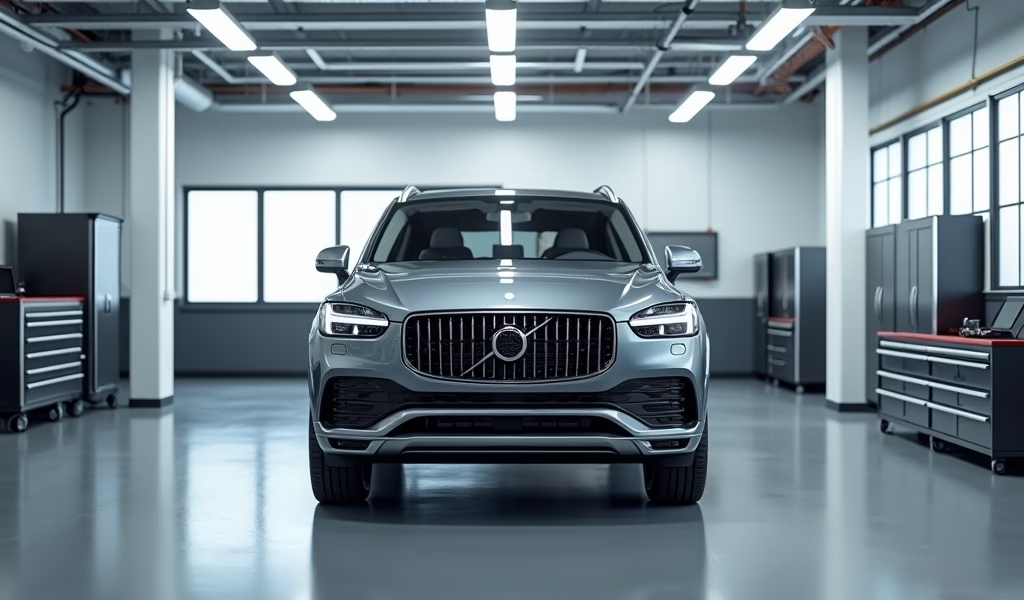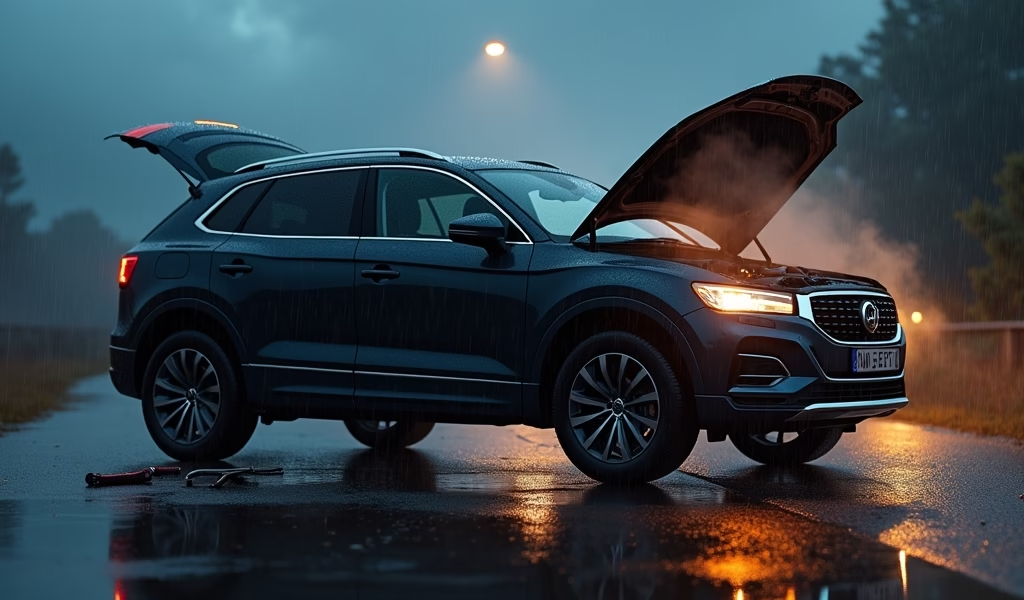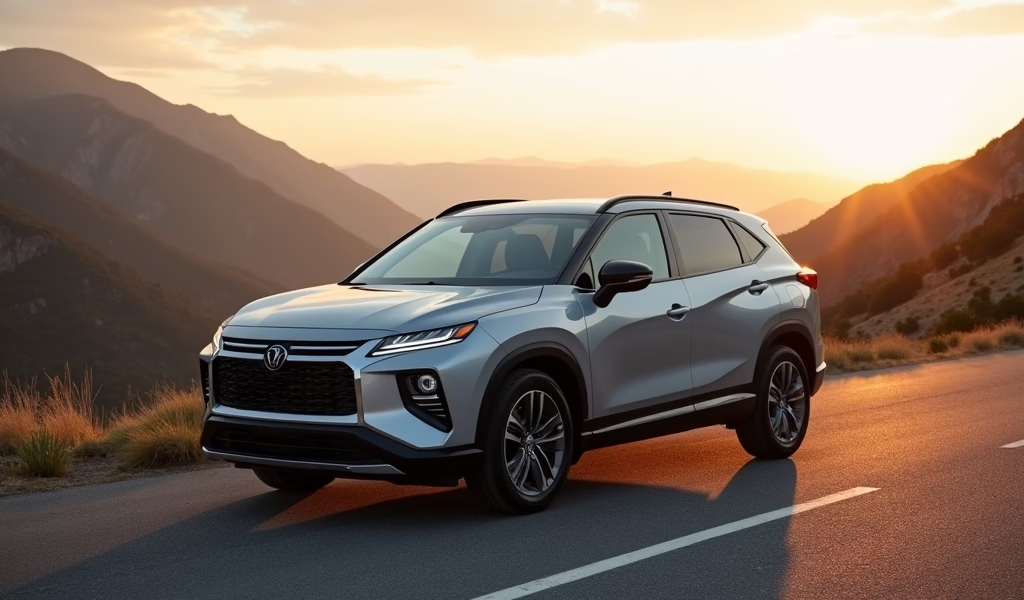Overview
This article explains how proper SUV maintenance can directly lower insurance costs through five key practices: regular fluid checks, tire maintenance, brake system care, vehicle cleanliness, and safety feature installation. By implementing these maintenance tips, SUV owners can reduce mechanical failures that lead to claims, demonstrate responsible ownership to insurers, and potentially qualify for discounts of up to 30% on their insurance premiums.
Table of Contents
- Understanding SUV Insurance Rates
- Why SUV Maintenance Impacts Your Insurance
- Tip 1: Regular Fluid Checks and Changes
- Tip 2: Tire Maintenance and Rotation
- Tip 3: Brake System Care
- Tip 4: Keep Your SUV Clean Inside and Out
- Tip 5: Install Safety Features and Anti-theft Devices
- How These Maintenance Tips Directly Affect SUV Insurance Rates
- Conclusion
- Frequently Asked Questions
Understanding SUV Insurance Rates
SUV insurance rates tend to be higher than those for standard sedans, and there’s good reason for that. As a mechanic with 20+ years of experience, I’ve seen firsthand how these powerful vehicles can impact both repair costs and insurance premiums. SUVs are typically more expensive to purchase, contain more sophisticated components, and often cost more to repair after an accident.
When insurance companies calculate your premium, they’re looking at several factors: the vehicle’s value, repair costs, safety ratings, and theft statistics. Sport Utility Vehicles often score higher in many of these categories, leading to those eye-popping insurance quotes you might have received recently.
But here’s the good news – you’re not powerless in this situation. Through proper maintenance and care, you can significantly influence your auto insurance premium while extending the life of your SUV. The relationship between vehicle maintenance and insurance costs is rarely discussed, but it’s one of the most effective ways to keep those rates manageable.
Why SUV Maintenance Impacts Your Insurance
Insurance providers love well-maintained vehicles. Why? Because they’re less likely to be involved in accidents caused by mechanical failures. Think about it – worn brake pads, bald tires, or faulty steering components all increase the risk of a collision. And for insurers, risk equals cost.
SUVs present unique maintenance challenges compared to smaller vehicles. They typically have more complex 4WD or AWD systems, larger engines, and more substantial suspension components – all of which require specific care to function properly.
According to research from the Insurance Institute for Highway Safety, vehicles with properly maintained safety systems are involved in 30% fewer accidents. That’s a statistic that insurers take very seriously when determining vehicle safety ratings that affect your premiums.

Tip 1: Regular Fluid Checks and Changes
Let’s start with the lifeblood of your SUV – its fluids. Proper fluid maintenance is perhaps the most cost-effective way to prevent major mechanical failures that could impact your insurance status.
Engine Oil
For SUVs, especially those with larger engines, regular oil changes are non-negotiable. Most modern SUVs can go between 5,000-7,500 miles between changes, but if you’re doing heavy towing or off-road driving, you’ll want to shorten that interval.
Dirty oil doesn’t just harm your engine – it can lead to catastrophic failures that might leave you stranded and filing a claim. Insurance companies track claim frequency, and multiple roadside assistance claims can flag your policy for a rate increase.
Transmission Fluid
SUVs often put more strain on transmissions, especially those used for towing or off-roading. Check your transmission fluid monthly for both level and condition. Fresh transmission fluid is typically bright red and has a sweet smell. If yours is dark or smells burnt, it’s time for a change.
A transmission replacement on a modern SUV can easily cost $4,000-$7,000. That’s the kind of repair that not only hurts your wallet but can also impact your insurance status if it leads to a claim.
Brake Fluid
Brake fluid is hygroscopic – it absorbs moisture from the air. This moisture can corrode brake components from within and reduce braking efficiency. For SUVs, which are heavier than standard cars, proper braking is especially crucial.
Most manufacturers recommend changing brake fluid every 2 years regardless of mileage. This simple maintenance item can prevent brake system failures that might otherwise lead to an accident and a subsequent insurance claim.
Tip 2: Tire Maintenance and Rotation
Your SUV’s tires are literally where the rubber meets the road, and they play a massive role in both safety and insurance rates. SUVs typically use larger, more expensive tires than standard vehicles, making proper tire care even more economically important.
Regular tire rotation every 5,000-7,000 miles ensures even wear across all four tires. SUVs, particularly those with AWD systems, can experience abnormal tire wear if rotations are neglected. This isn’t just about getting more miles from your tires – it’s about maintaining optimal traction and handling characteristics.
Proper tire inflation is equally crucial. Check your tire pressure monthly and before any long trips. Underinflated tires on a heavy SUV create excessive heat and dramatically increase the risk of a blowout – exactly the kind of scenario that could lead to an accident and insurance claim.
Many modern SUVs come equipped with Tire Pressure Monitoring Systems (TPMS), but don’t rely solely on the warning light. Use a quality gauge to check all tires, including your spare. According to the National Highway Traffic Safety Administration, properly inflated tires can also improve your fuel economy by up to 3% – a nice bonus on top of the safety benefits.
Tip 3: Brake System Care
SUVs are heavier vehicles, which means they put more strain on braking systems. This makes brake maintenance not just a safety issue but a direct factor in your insurance risk profile.
Don’t wait for that telltale squealing to check your brake pads. Most SUVs should have their braking systems inspected every 10,000 miles. Look for a minimum of 3-4mm of pad material – anything less means it’s replacement time.
Pay special attention to your rotors as well. SUVs can warp rotors more quickly than lighter vehicles, especially if you’re an enthusiastic driver or regularly travel in mountainous terrain. Warped rotors cause vibration during braking, which can extend stopping distances – a definite safety and insurance liability.
If your SUV is equipped with an electronic stability control system (ESC) or automatic emergency braking (AEB), keeping your brake system in top condition is essential for these safety features to function properly. Insurers increasingly offer discounts for vehicles with these systems, but only if they’re working correctly. In fact, maintaining these systems can directly impact your monthly car insurance payments, often saving you money in the long run.

Tip 4: Keep Your SUV Clean Inside and Out
Vehicle cleanliness might seem unrelated to insurance rates, but there’s more to it than meets the eye. Regular washing removes road salt and other corrosive substances that can damage your SUV’s body and undercarriage. In regions where road salt is used, undercarriage rust can compromise structural integrity over time – potentially affecting how your vehicle performs in an accident.
But cleaning goes beyond the exterior. Keep your interior clean to prevent debris from interfering with pedal operation or distracting you while driving. A water bottle rolling under your brake pedal at the wrong moment could lead to an accident that raises your insurance rates.
Clean windows and mirrors ensure optimal visibility in all driving conditions. Many accidents result from poor visibility, especially at night or in bad weather. Taking five minutes to properly clean all glass surfaces can literally be the difference between a safe trip and an insurance claim.
Don’t forget to periodically clean your engine bay as well. While this might sound like purely cosmetic maintenance, a clean engine compartment makes it easier to spot developing problems like fluid leaks before they cause a breakdown or accident. Use caution when cleaning around electronic components, or better yet, have this service performed by a professional.
Tip 5: Install Safety Features and Anti-theft Devices
Modern SUVs are prime targets for thieves due to their high value and desirable parts. Installing and maintaining effective anti-theft devices can directly lower your insurance premiums, often by 5-10% or even more depending on your insurance provider.
Consider these effective anti-theft measures:
- GPS tracking systems that help recover stolen vehicles
- Steering wheel locks that provide visible deterrence
- Alarm systems with motion detection capabilities
- Engine immobilizers that prevent hot-wiring
Beyond theft protection, aftermarket safety features can also impact your SUV insurance rates. Dash cams, for instance, not only provide evidence in case of accidents but may qualify for discounts with certain insurers. They’ve become particularly valuable in fighting fraudulent claims, which indirectly helps keep everyone’s rates lower.
Backup cameras and parking sensors reduce the likelihood of low-speed collisions, which are among the most common insurance claims for SUV owners. If your older SUV doesn’t have these features, aftermarket options are relatively affordable and can potentially pay for themselves through insurance savings and avoided accidents.
When considering these additions, check with your insurance provider first to confirm which safety features qualify for discounts. Some companies require professional installation rather than DIY solutions to qualify for premium reductions. This small step ensures you’re making upgrades that will actually benefit your car insurance costs in the long run.
How These Maintenance Tips Directly Affect SUV Insurance Rates
Let’s connect the dots between these maintenance practices and your actual insurance premiums. Insurance companies don’t directly check your maintenance records when setting rates, but the effects of good maintenance show up in several ways they do measure:
Claims History
Well-maintained SUVs simply have fewer mechanical failures that lead to accidents or roadside assistance claims. Fewer claims mean you maintain a clean driving record, which is perhaps the single biggest factor in determining your rates. Even one preventable accident can raise your premiums by 20-40% for years.
Vehicle Longevity
Insurance companies know that owners who maintain their vehicles are generally more responsible drivers. Some insurers now offer usage-based programs that track not just your driving habits but can detect maintenance-related issues like hard braking that might indicate worn brake components.
These programs, like Progressive’s Snapshot, can provide discounts of up to 30% for drivers who demonstrate both safe driving habits and proper vehicle maintenance.
Resale Value
While not directly tied to insurance rates, maintaining your SUV’s value through proper care means you’ll have more equity when it’s time to trade in. More equity means potentially lower financing on your next vehicle, which can offset insurance costs in your overall vehicle budget.
Comprehensive maintenance records also make private sales easier and more profitable. When selling privately, being able to demonstrate consistent care can often net you 10-15% more than an identical vehicle without maintenance history.
Conclusion
Managing your SUV insurance rates doesn’t have to be a passive experience where you simply accept whatever premium increases come your way. By implementing these five maintenance tips – fluid maintenance, tire care, brake system checks, cleanliness, and safety upgrades – you’re taking an active role in controlling your insurance costs.
Remember that insurance companies are in the business of assessing risk. The more you do to demonstrate that your SUV presents a lower risk through proper maintenance and care, the more likely you are to enjoy favorable rates. Even small discounts can add up to hundreds or even thousands of dollars over your years of SUV ownership.
Beyond insurance savings, these maintenance practices will extend your vehicle’s life, improve safety for you and your passengers, and enhance your driving experience. That’s the kind of win-win scenario that makes sense for every SUV owner, regardless of what model you drive or which insurance company you use.
Start implementing these practices today, and you’ll likely see the benefits in your next insurance renewal. Your SUV – and your wallet – will thank you.
Frequently Asked Questions
Why are SUV insurance rates typically higher than sedan rates?
SUVs generally cost more to insure because they have higher purchase prices, more expensive parts, and can cause more damage in accidents. Their higher center of gravity also makes them more prone to rollovers in certain situations.
Can installing aftermarket safety features really lower my SUV insurance rates?
Yes, many insurers offer discounts for safety features like backup cameras, blind-spot detection, and anti-theft devices. Contact your insurance provider to confirm which specific features qualify for discounts on your policy.
How often should I service my SUV to maintain optimal insurance rates?
Follow your manufacturer’s recommended maintenance schedule at minimum, typically every 5,000-7,500 miles. More frequent maintenance may be necessary for SUVs used for towing, off-roading, or in extreme climates.
Do insurance companies check my maintenance records?
Insurance companies don’t typically request maintenance records when setting rates. However, proper maintenance prevents accidents and breakdowns that would generate claims and ultimately affect your premiums.
Is it worth paying for premium fuel for my SUV to get better insurance rates?
Using the manufacturer-recommended fuel grade doesn’t directly impact insurance rates. However, using the correct fuel prevents engine damage that could lead to breakdowns and potential accidents that would affect your premiums.

